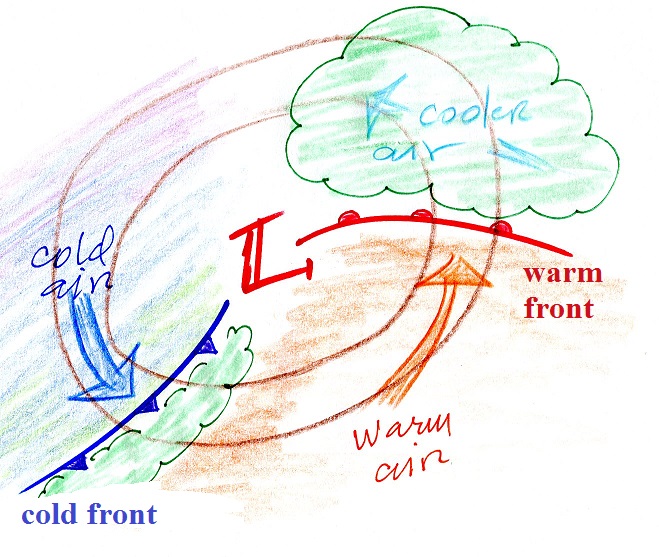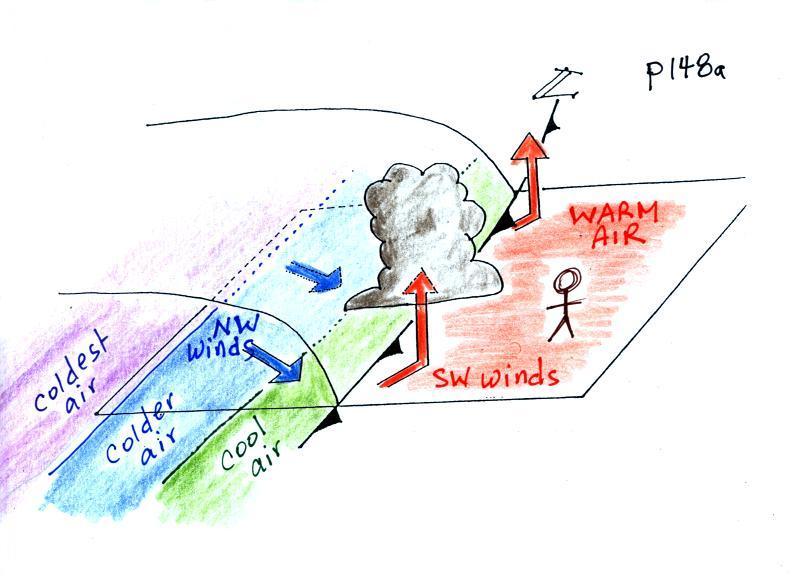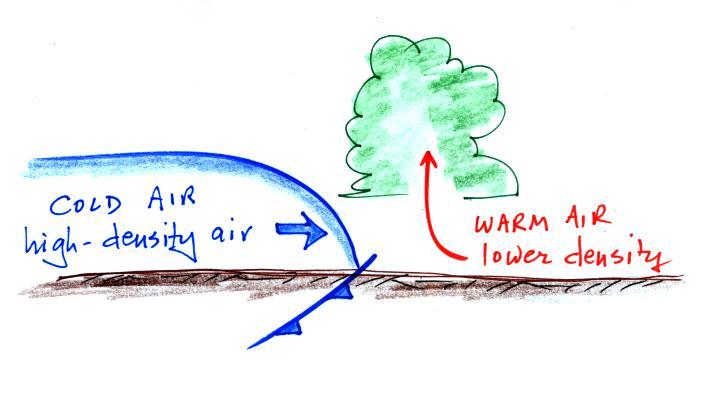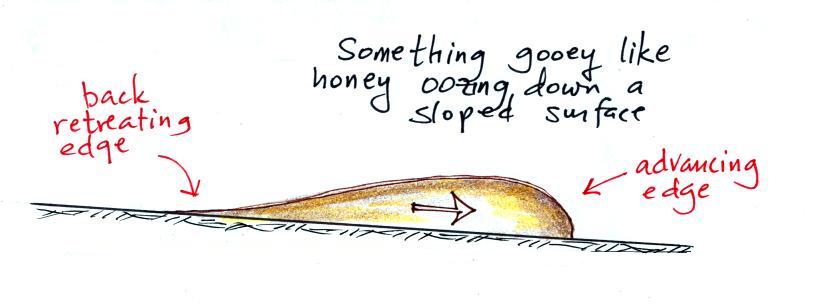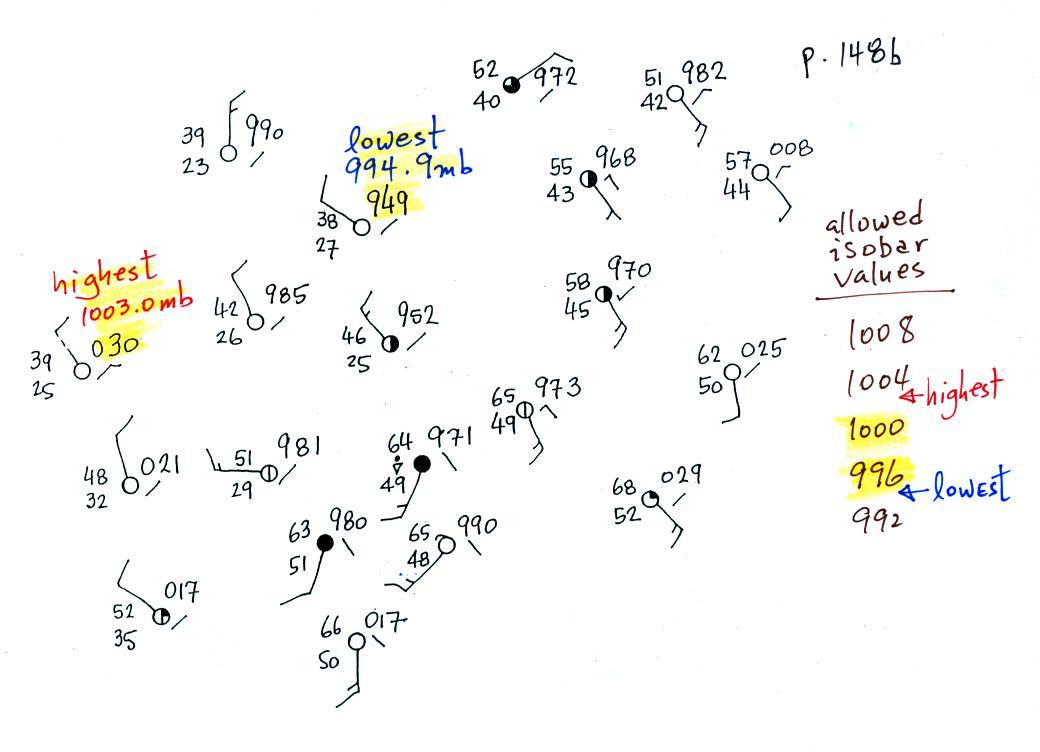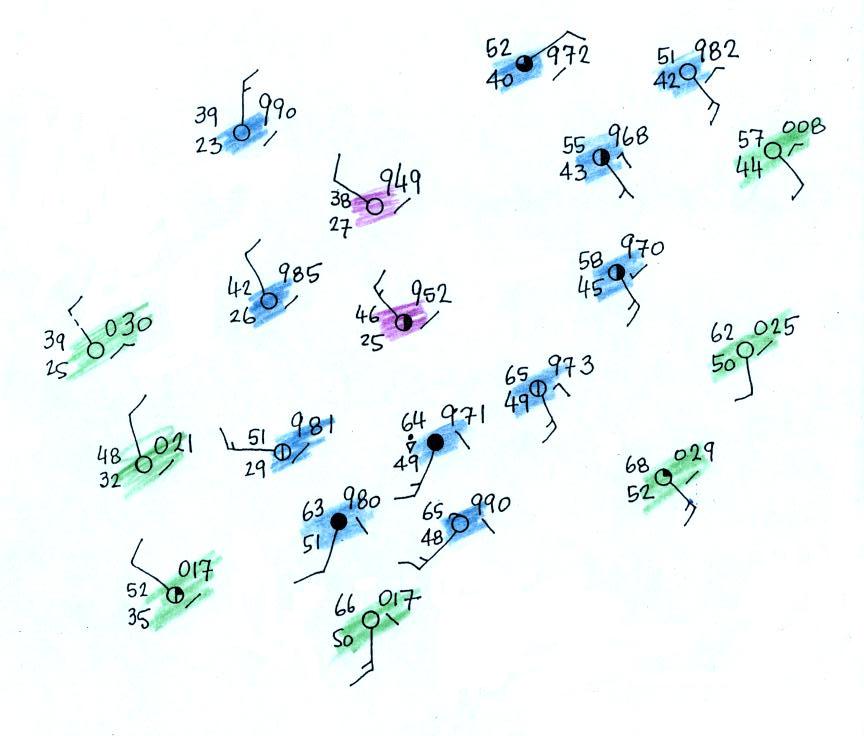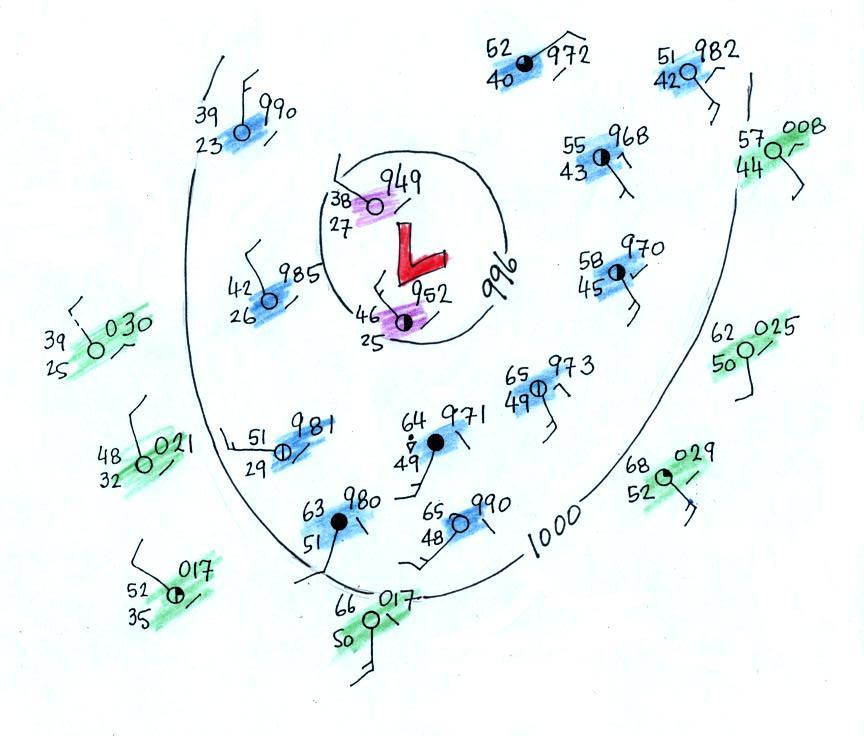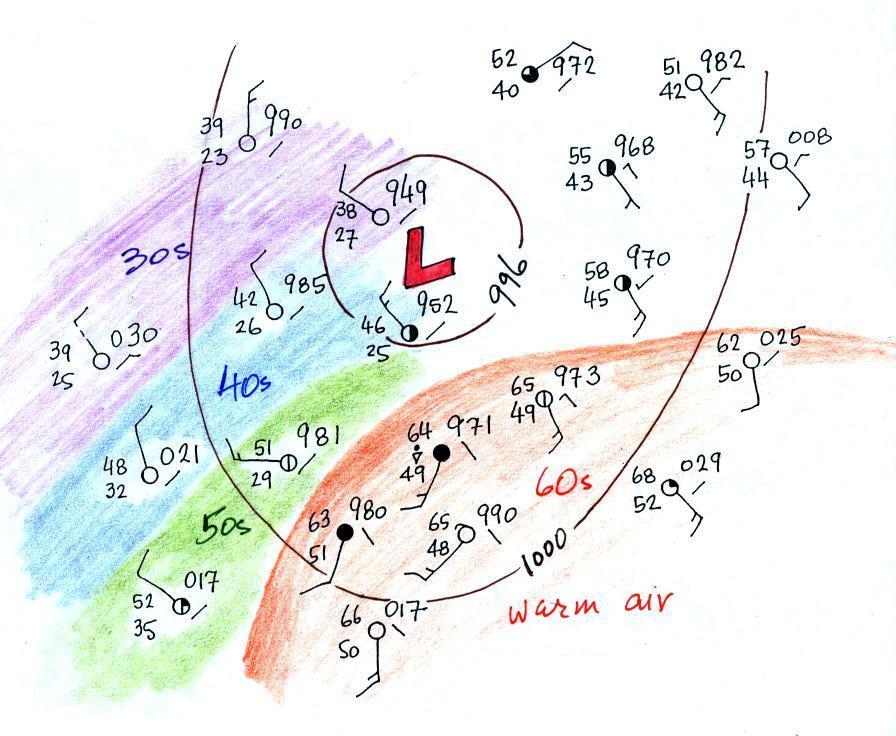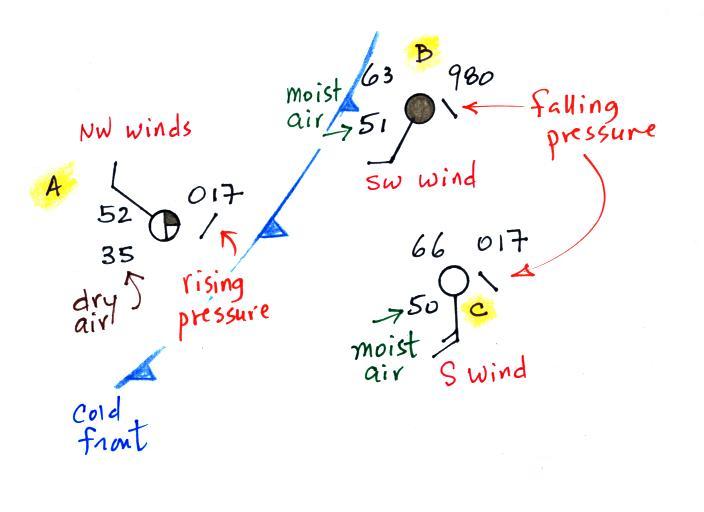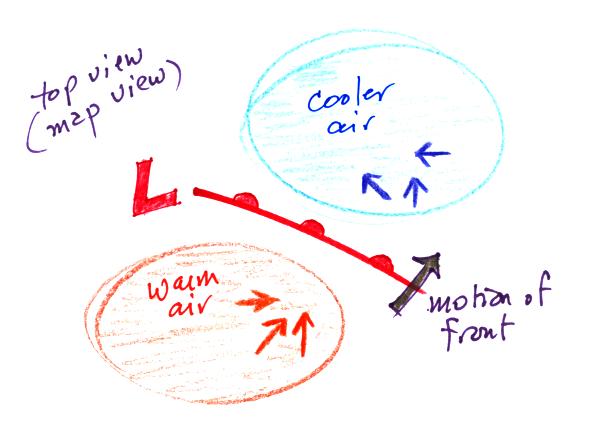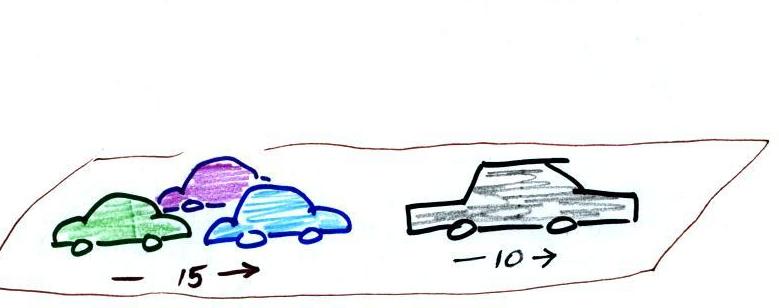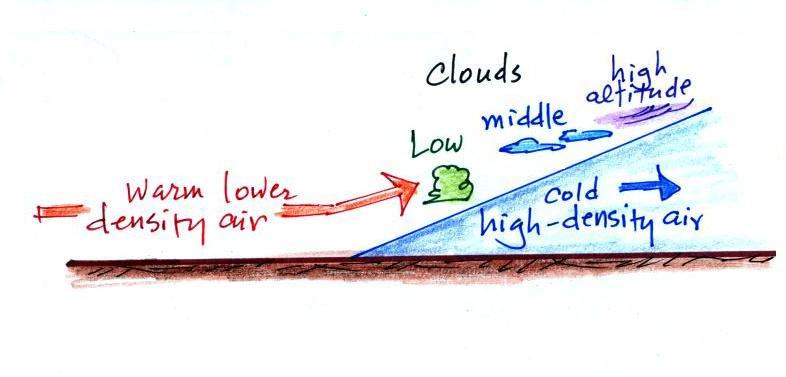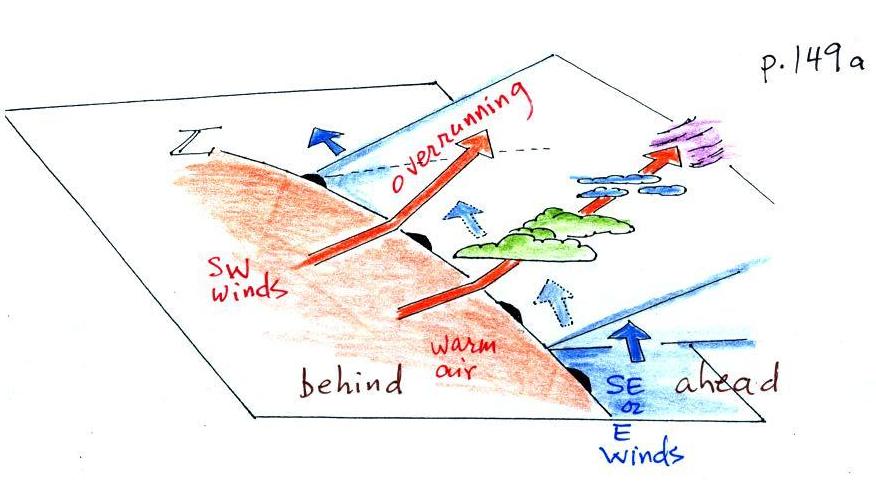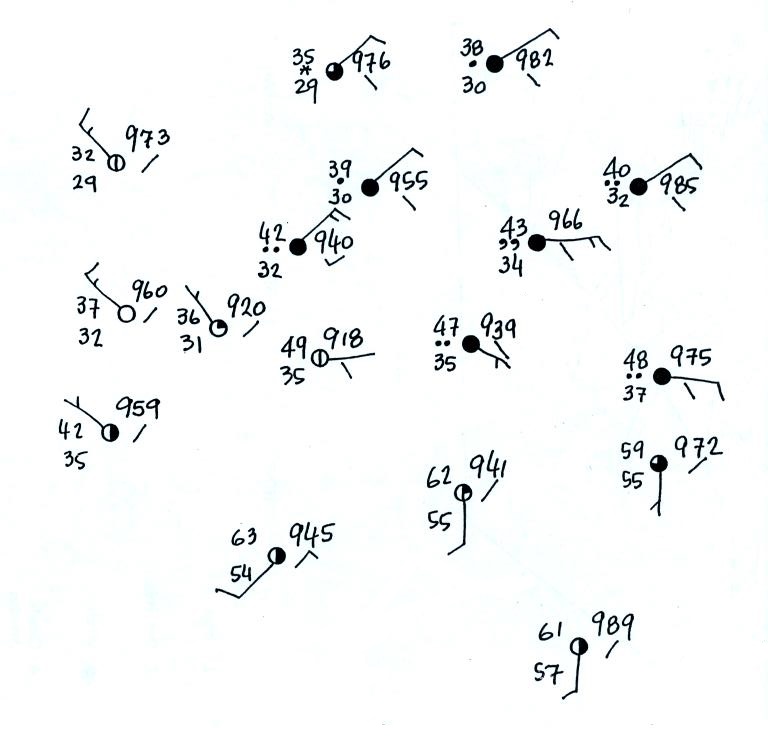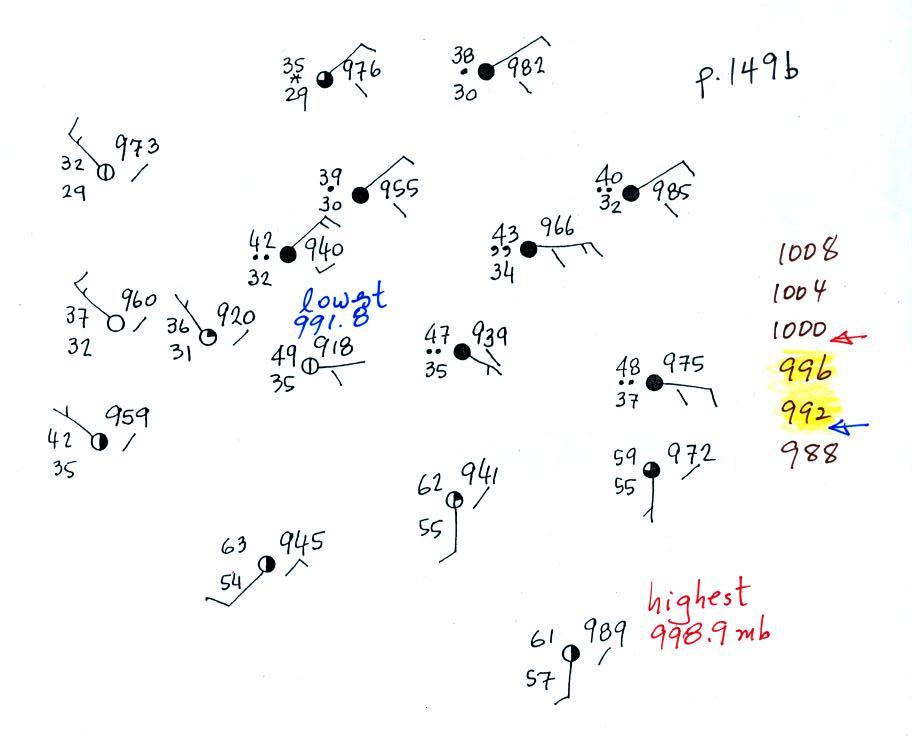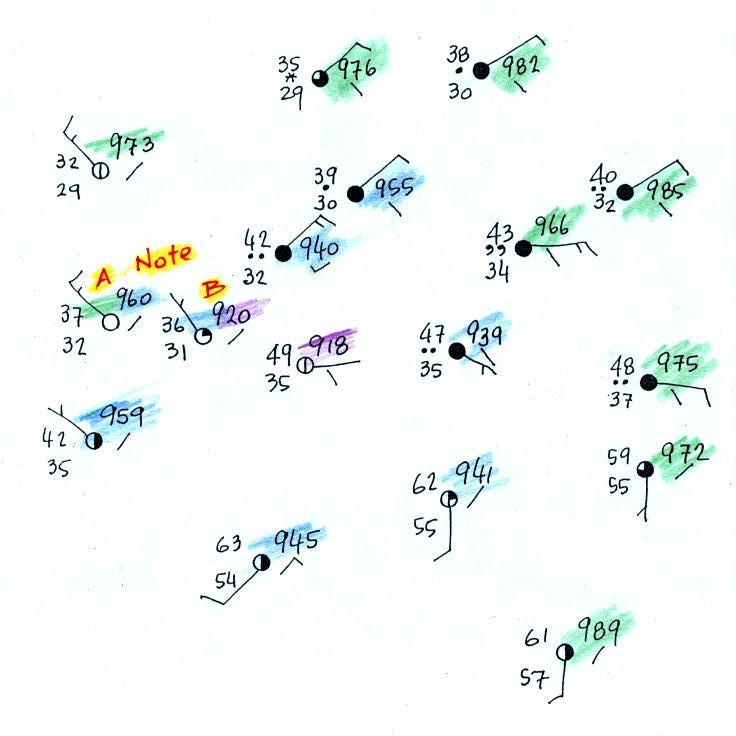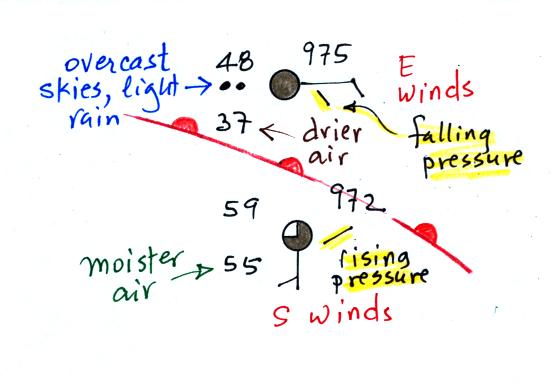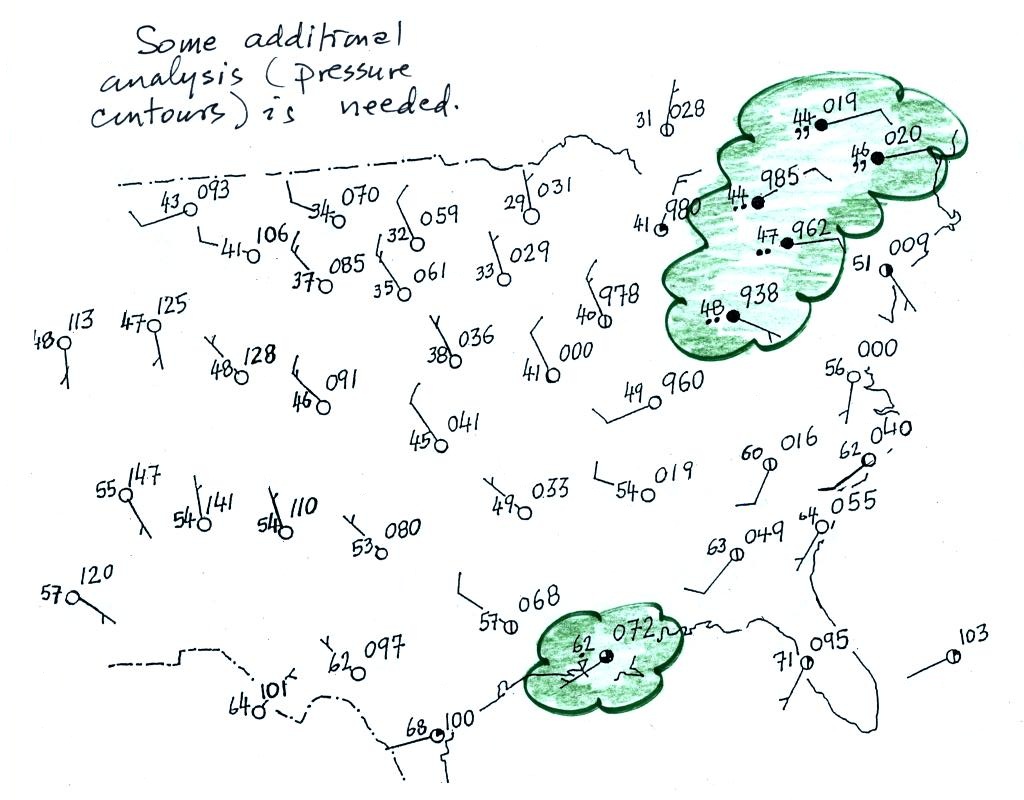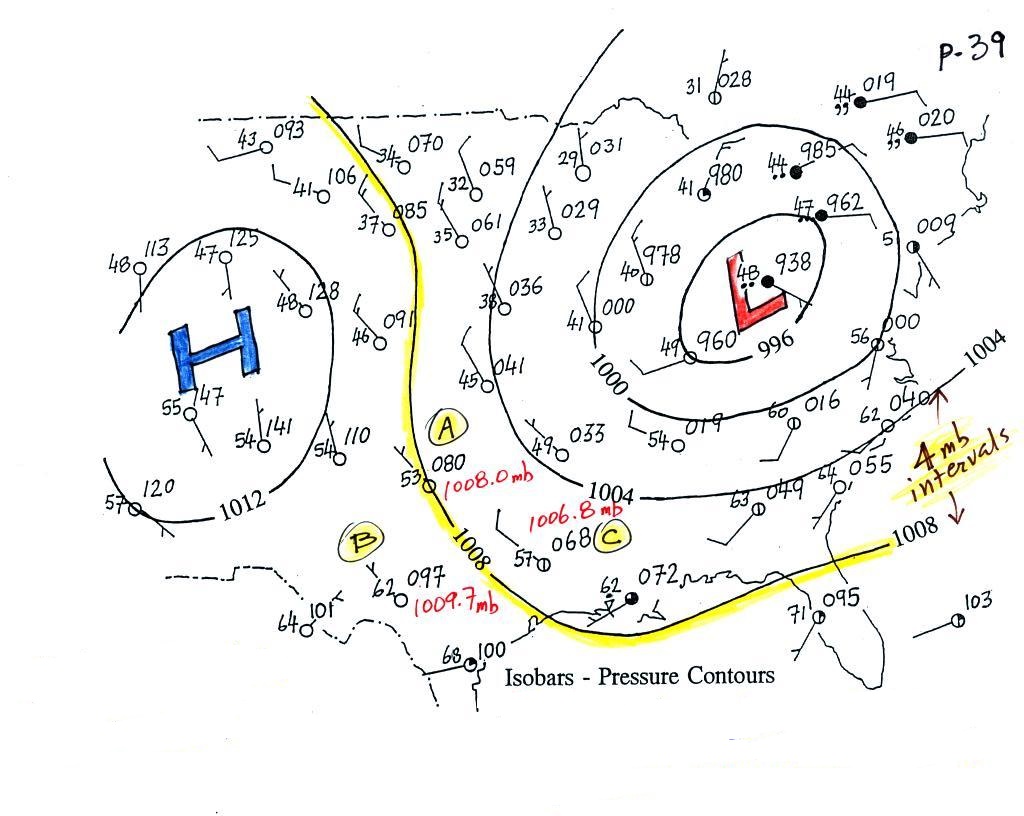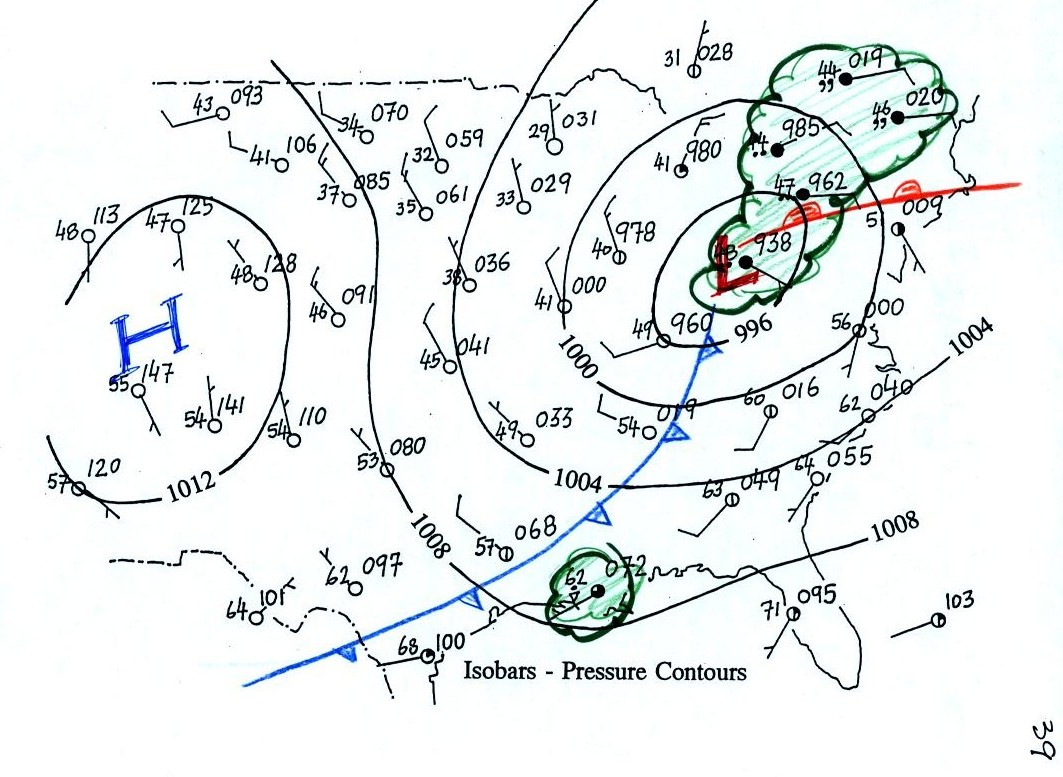Here are the
kinds of weather changes that usually precede and
follow passage of a warm front.
Weather
Variable
|
Behind
(after)
|
Passing
|
Ahead
(before)
|
Temperature
|
warmer
|
|
cool
|
Dew point
|
may be moister
|
|
drier
|
Winds
|
SW, S, SE
|
|
from the East or
SE, maybe even the S
|
Clouds,
Weather
|
clearing
|
|
wide
variety of clouds that may precede arrival of the
front by a day or two
clouds may produce a wide variety of types of
precipitation also
(snow, sleet, freezing rain, and rain)
|
Pressure
|
rising
|
minimum
|
falling
|
Locating
a warm front on a weather map
We need to finish our study of
surface weather maps by trying to located a warm front.
This is the map we will be working with
(see p. 149b in the ClassNotes). It's worth pausing
and noting that you really can't make any sense out of
this jumble of weather data at this point.
Step #1
We'll start by drawing some isobars to map out the
pressure pattern. A partial list of allowed isobars
is shown at the right side of the map above (increments of
4 mb starting at 1000 mb).
We've located located the highest and
lowest pressure values on the map. Then we choose
allowed isobar values that fall between these
limits. In this case we'll need to draw 992 mb and
996 mb isobars.
Here's the map with color coded pressures.
Pressures less than 992 mb are purple,
pressures between 992 and 996 mb are blue, and pressures greater
than 996 mb are green.
Note that station B has a pressure of exactly 992.0 mb,
the 992 mb isobar will go through that station. The
996 mb isobar will go through station A because it has a
pressure of exactly 996.0 mb.
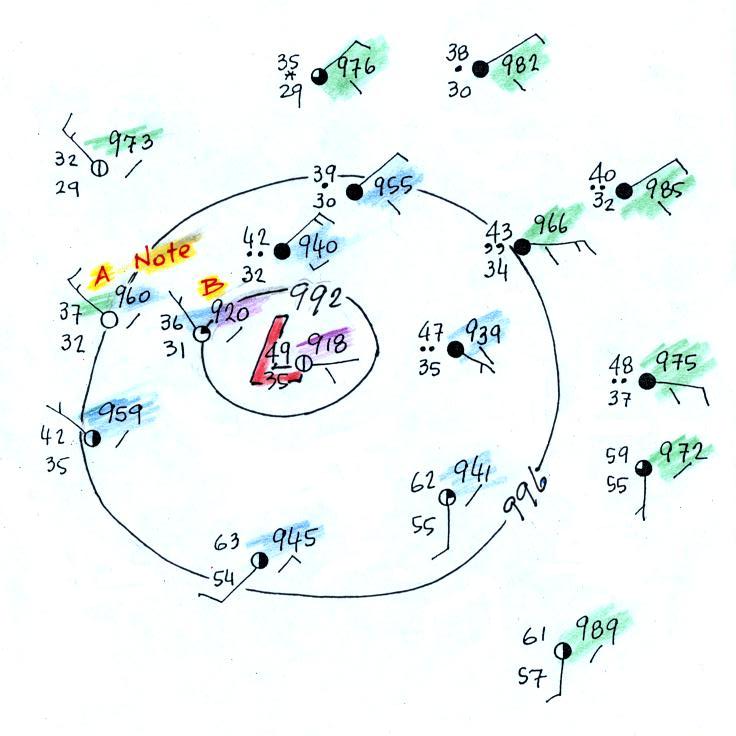
Here's the map with the isobars drawn
in. On the map below we use colors to locate the warm
and cooler air masses.
Step #2
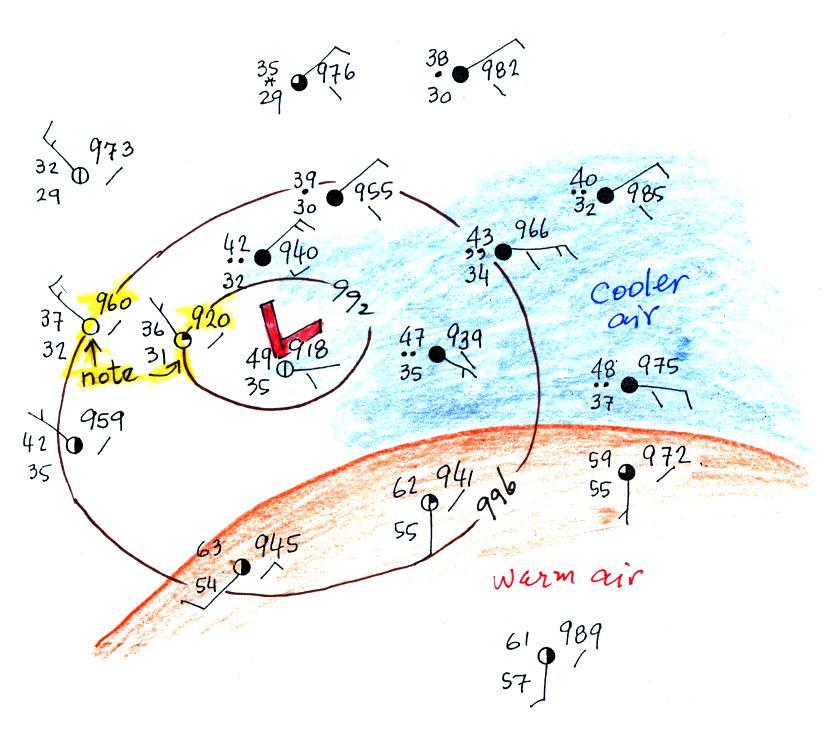
The warm air mass has been colored in orange.
Cooler air east of the low pressure center is blue.
Can you see where the warm front should go?
Step #3
Here's the map with a warm front drawn in
(the map was redrawn so that the edge of the warm
(orange) air mass would coincide with the warm
front).
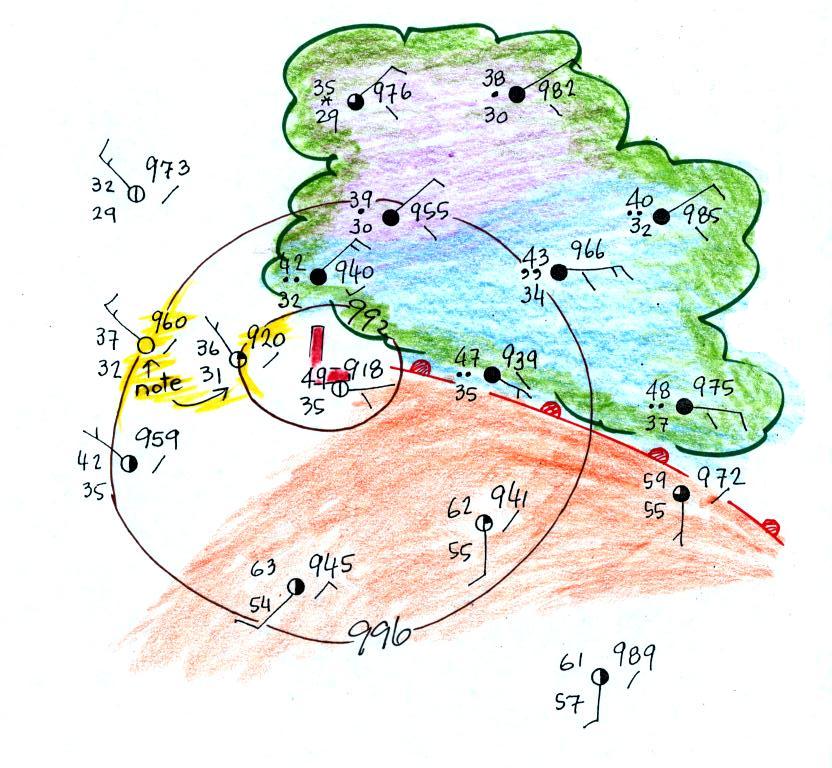
The change in wind directions was
probably more pronounced than the temperature change.
Most of the clouds outlined in green are probably being
produced by the warm front. You can see how more
extensive cloud coverage is with a warm front.
Step #4
Two of the stations near the right edge of the
picture and on opposite sides of the front are redrawn
below.
The station north of the front has cooler and drier air,
winds are from the east, skies are overcast and light rain is
falling. The pressure is falling as the warm front
approaches. These are all things you'd expect to find
ahead of a warm front. Behind the front at the southern
station pressure is rising, the air is warmer and moister,
winds have shifted to the south and the skies are starting to
clear.
In this case there is a Step #5
Have a look at the left, western, side of the
map. There's pretty good evidence of a cold front.
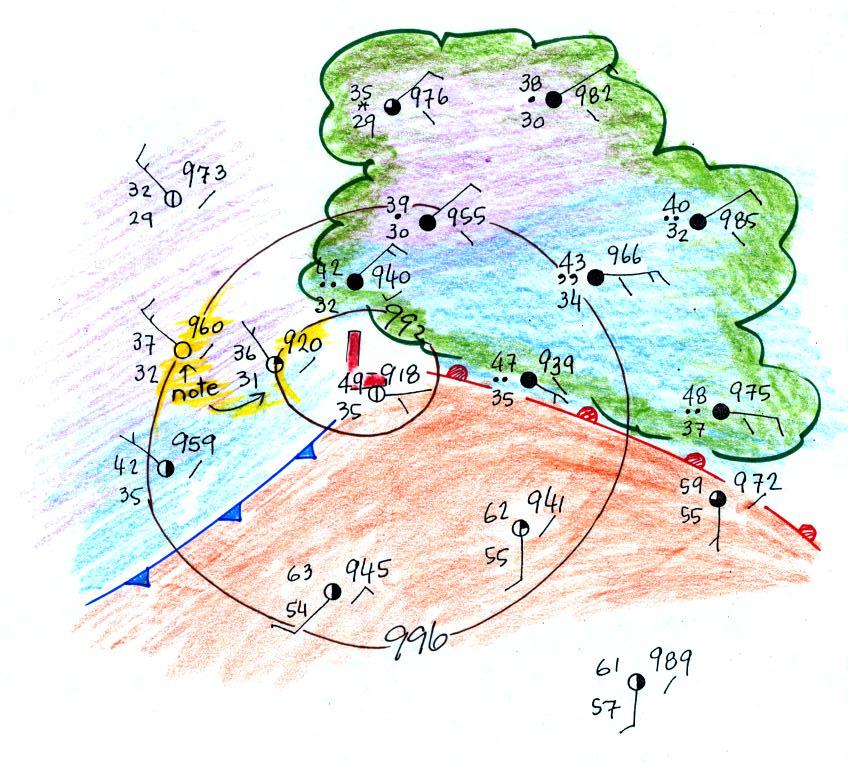
There's a big temperature change (low 60s
to low 40s and 30s) and a very noticeable wind shift (SW ahead
of the cold front and NW behind).
We need to go back to the figure where this
section on surface weather maps all began.
After learning how weather data
are plotted on a map using the station model notation we
found that the data, by themselves, were not enough to
really be able to say what was causing the cloudy, rainy
weather in the NE and along the Gulf Coast.
We added some isobars to reveal the pressure pattern and to
locate large centers of high and low pressure. Winds
converging into the center of low pressure cause air to rise
and might be part of the explanation for the unsettled weather
in the NE. That would explain the rain shower along the
Gulf Coast however.
